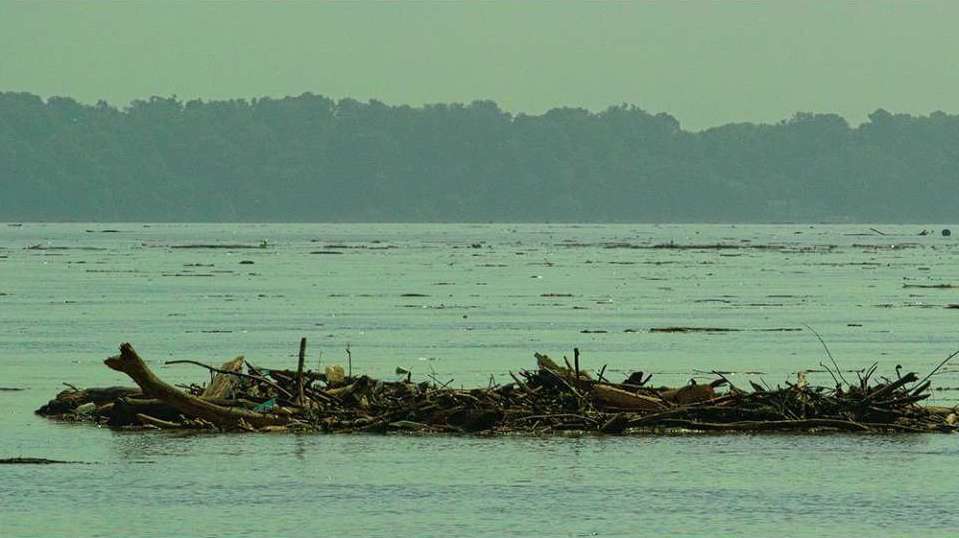
Even though we didn’t get to have the Elite event on Chesapeake Bay, that week’s practice really made me think about the influences of high water. That was a case of extreme levels, but even in more moderate scenarios anglers can be more productive on their local fisheries if they remain aware of what’s going on.
In most cases, when the water gets high, especially in the summertime, you want to follow the bank up because those fish will get dirt shallow. There are a couple reasons for that, and one is that it’s just easier for the fish to feed when they’re in shallow water. Also, the waves oxygenate the shallows so the baitfish and the bass feel more comfortable up there.
On the flip side, when the water rises on a highland reservoir, the deep bite can actually get really good because the local dam authority has to start running current in a lake that doesn’t normally have current. Some of the best fishing days I’ve experienced have been in the heat of the summer when we got rain and they started moving some water. Here, it’s hard to beat a Bomber BD7 or a swimbait.
The difference on a tidal fishery like Chesapeake Bay is that the water’s not going to get super high like a normal reservoir because of the daily fluctuations in water level. That being said, what made the situation on the bay so challenging was the heavy rains to the north swelling the Susquehanna River, while local rains brought even more water into the system.
When you know the areas upstream are receiving big rains, monitoring the flood gate schedules will tell you a lot about what to expect in terms of water flow. Knowing how much the water will come up, when it will stabilize and when it will start falling gives you a better idea of what areas might be in play.
During practice for the Chesapeake event, a heavy inflow of water meant changing conditions from one day of practice to the next. Before we got the news of the tournament’s cancellation, I had decided that I would scrap everything I had been doing in practice and start from scratch. A lot of times, that may be what it takes when rising water changes things so quickly that a pattern from one day might be completely gone the next.
I had been fishing submerged grass beds off the bank, but if the tournament had gone as scheduled, I was going to cover water with a spinnerbait and flip a jig or a Texas-rigged YUM Christie Critter around shoreline cover. Like I said earlier, the dirtier the water, the shallower you want to fish. The strike zones become very small and bringing those baits closer to the fish gives you a better chance of getting them to bite.
The other thing you want to factor into the equation is the wind strength and direction. For example, during practice on Chesapeake Bay, we had a pretty heavy south wind that wasn’t letting the tide go out. Just before the tournament was supposed to start, the wind died down and that let the tide follow its normal schedule, which pulled some of the water out of those creeks.
Unfortunately, there was just too much water in the system during our week, but extreme cases like this are pretty rare. High water scenarios happen just about every year, so understand the dynamics, pay close attention to all of your boating safety considerations and you can often find a good limit of fish.

